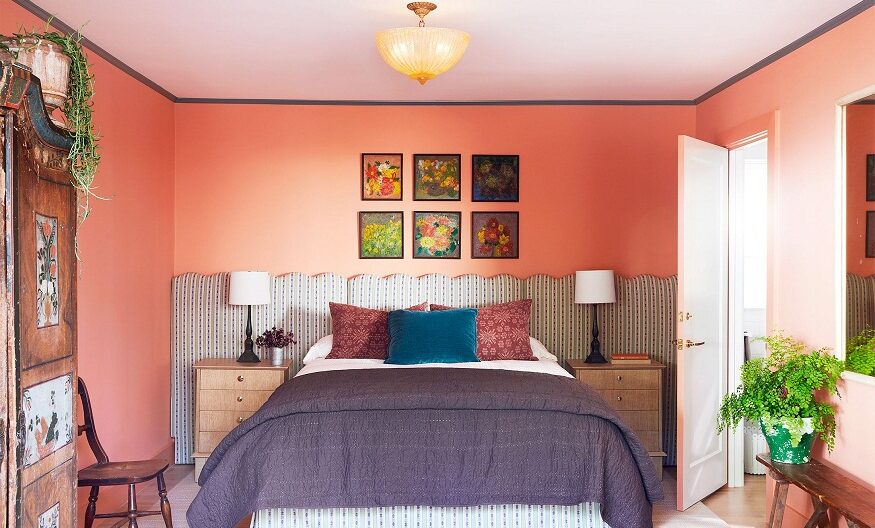
Let’s face it, being in front of a wall of paint samples can feel pretty daunting. Hundreds of colours whisper promises of a transformed space—leaving you to only wonder, “Will this pale lavender wash me out?” or, “Is this bold emerald too much for the living room?” No worries! Enter the answer: paint shade card. It’s your weapon for surfing the colour-filled world of paint and unlocking the perfect hues for your home.
Think of it as your navigating stars: Room Size and Natural Light
Before setting into the colour world, consider the size and natural lighting your room receives. Tight, constricted spaces do well with lighter shades available in the colour card shade, such as those available in the Asian Paints colour shade card with “Whisper White” or Nippon Paints’ shade card with “Pale Linen.” These breezy tones give the impression of a larger space. In spaces that have plenty of light, go ahead and play with bolder colours.
Exploring the Spectrum and Narrowing Down Your Choices
Now get creative! Colour shade cards are your invitation to explore a whole spectrum of possibilities. Embrace your inner artist! Do you crave a vibrant living space? Perhaps a fiery orange, like “Sunset Glow” by Asian Paints or Nippon Paints’ “Terracotta,” will put some pep in your step. Yearning for a tranquil bedroom retreat? Look toward calming blues, such as “Serenity” from Asian Paints or “Ocean Breeze” by Nippon Paints.
Now that the inspiration’s been flowing it’s time to make your choices and start to refine them. This is where the real magic of comparison happens. Typically color shade cards will group similar shades so a trick is to hold the card at arm’s length and compare different tones. A minute difference in the shade from one square to the next can alter the overall feel immensely. This is where side-by-side comparison really makes it super easy to decide your favourites.
Test, Test Test: The Power of a Sample Pot
Before you go too far ahead and purchase gallons of your selected paint, get a tester pot of your selected colours. Paint a big swatch on a piece of white poster board, and here’s the important bit – move the board around the room throughout the day. Note the hue in the spaces and how it responds to natural and artificial light. Can the bright yellow that you admired at the store turn sickly under the fluorescent lights in your living room? If only you could have known in advance.
Bringing Colors in an Entire Room Together: Color Palettes the Right Way
To talk more about harmony. It’s never just about the hero colour. It’s about putting together an entire palette that creates harmony in your room. Here are some tips to create that harmony:
Stick to a Color Palette: There are about infinite colours in the colour shade cards—pick around three to five of them. It can be your primary wall colour, an accent colour to use for trim or on furnishings, and a neutral to paint the ceiling.
Play with Contrast: If you really want to pump up the drama factor, pair light and dark.
Use texture: Texture is your friend! Try a few different paint finishes—maybe a flat matte or a slightly glossier eggshell—in the same colour family to create some intrigue.
Accent Appropriately: This is where you can use a throw pillow, area rug or a piece of art with that palette to bring a pop of colour.
Earthy Neutrals and Dreamy Pastels: Finding Your Color Story
Many a time, the best solution is the simplest solution. Neutrals and pastel tones populate colour shade cards, which can be used to create looks that stand the test of time. Earthy neutrals: Warm “Beige Bliss” by Asian Paints or calming “Greige” by Nippon Paints ooze comfort and stability. Dreamy pastels: “Baby Blue” by Asian Paints or “Lilac Mist” by Nippon Paints ooze elegance and serenity—just what a bedroom and bath would need.
Background and Inspiration: Nature’s Palette and Mood Boards
Take your lead from Mother Nature herself! Look around at the colours that surround you: the calming greens of a forest, the flashy oranges of a sunset. Imagine these natural hues crossing over into your home. Don’t be afraid to experiment!
Another great means of seeing your colour story through is the mood board. Take paint swatches from your colour shade card, fabric samples, and magazine clippings that inspire you, and compose an image of the atmosphere you want to achieve.
Conclusion
Remember there’s no “right” colour. Colour shade cards are a tool for playing with and exploring. Have a good time while you do the process, and creation is going to unfold.
A little patience and some dab of imagination, together with your colour shade card in hand for guidance, and your home will take on a whole magic that will be reminiscent of only you.
